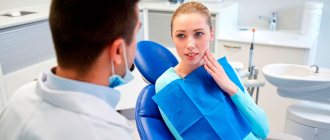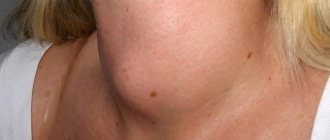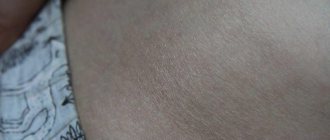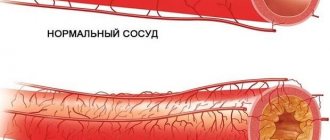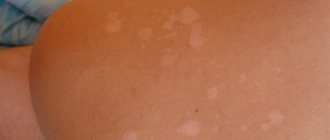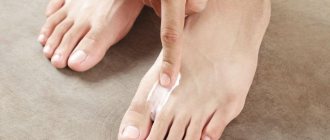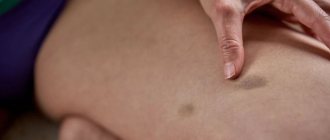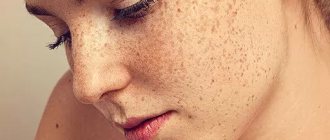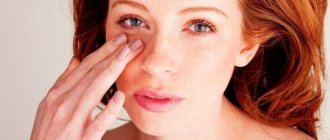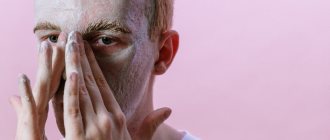Quite common nowadays are questions about why yellow spots appear on the human body and what they may indicate. That is why we will now try to understand this in more detail.
A person’s skin is considered a mirror of his health, because a considerable number of diseases and pathological processes are manifested by changes in his condition. Most often, various spots appear on the skin. In this case, it is recommended to seek help from a doctor as soon as possible, because only he can determine the exact cause of their appearance and prescribe adequate treatment.
Reasons for changing shade on the skin of the palms
Our body is a coherent system that depends on the work of all organs. If at least one of the organs performs its function poorly, the system malfunctions and the body indicates in possible ways the existence of a problem - in our case, these are yellow palms.
The reason for the appearance of yellowness on the palms may be a dysfunction of the liver or choleretic bladder. Processes harmful to the body can be provoked by the following diseases:
- cirrhosis of the liver;
- inflammatory processes in the choleretic ducts;
- inflammatory processes in the gallbladder;
- hepatitis;
- gallstone disease.
Yellow hands and fingers
But you shouldn’t immediately fall into despair, because yellow palms can indicate “false jaundice.” This disease does not pose a particular danger to the body, since only external signs of the disease appear, and the functioning of the internal organs is not impaired.
Another thing is if you are worried not only about the yellowness of your hands, but also about accompanying symptoms, such as abdominal pain, painful sensations when urinating, etc., without hesitation, you should consult a doctor to conduct a full examination.
In any case, only a specialist can confirm or refute the diagnosis, so do not delay going to the doctor.
The effect of carotene on skin color
Excessive consumption of certain fruits, vegetables or root vegetables can also cause yellow palms. Review your diet, maybe lately you have become interested in eating carrots, pumpkin, squash or tangerines.
When consuming products containing keratin, most of the substance is absorbed into the blood and distributed throughout the human body. Due to the fact that the skin of the palms contains less of the coloring substance melanin, an excessive amount of keratin in the body may manifest itself as yellowish palms.
Remedies
When diagnosing xanthomas, first of all, you need to monitor your diet. It is recommended to avoid drinking alcoholic beverages, dishes and foods containing large amounts of animal fats. Particular attention should be paid to the level of cholesterol in the blood; if it increases, it is recommended to take medications prescribed by the doctor.
If the xanthomas are large and cause a cosmetic defect, they may need to be removed. This can be done using:
- electrocoagulation,
- laser,
- surgical intervention.
For treatment to be effective, it is necessary to determine the root cause of xanthomas and eliminate it. After this, they can disappear on their own without outside help.
Yellowness is a sign of a serious illness
Yellowness of the palms can hide serious diseases, such as infectious jaundice can be caused by hepatitis B, A, C. In the acute form, the body temperature may rise, nausea, and abdominal pain may appear.
Another serious disease that causes yellow palms is anorexia nervosa. The disease is accompanied by a number of symptoms:
- fear of gaining weight;
- obsessive desire to lose weight;
- disturbances in a person’s consciousness about his own appearance (even with exhaustion of the body, a person considers himself very fat);
- rapid weight loss (15% of usual body weight);
- changes in skin color, yellowing of the palms;
- aggressiveness;
- drowsiness, fatigue.
This disease most often occurs in adolescents and women, which can be triggered by severe shock. The disease initially manifests itself in a sharp change in behavior and refusal to eat. Refusal of normal food provokes the development of other, more complex diseases. In this case, it is important to identify the problem in time and contact a specialist.
Yellow palms due to jaundice
Jaundice is a disease characterized by the appearance of a yellowish tint on the skin and mucous membranes. Yellow spots are especially noticeable on the palms, lower part of the tongue, and also on the eyeballs.
To understand the causes of jaundice, you should know that yellowing of the skin is caused by an increase in bilirubin, which is produced as a result of the breakdown of another component of the blood - hemoglobin. Bilirubin is divided into two types:
- indirect bilirubin occurs immediately after the breakdown of hemoglobin;
- direct bilirubin is produced by the liver after a series of biochemical reactions.
Having learned about the peculiarities of bilirubin production, we can move on to our main question - why do hands turn yellow during jaundice. First of all, it should be said that jaundice comes in several types:
- hemolytic - the disease occurs as a result of the accelerated process of hemoglobin breakdown. As a result, an excessive amount of indirect bilirubin is produced, which the liver does not have time to process directly;
- hepatic – a disease caused by damage to the body’s main filter, the liver. There may be several reasons: drug, alcohol poisoning, toxic effects on the body, viral hepatitis, etc.;
- cholestatic - the disease occurs due to blockage of the bile ducts. Closure of the bile ducts can occur in the presence of a tumor or stones.
Do not try to treat jaundice on your own, even if you have already encountered a similar disease. Many online forums contain information about the treatment of this disease with diuretic decoctions. But if jaundice is caused by stones in the gallbladder or its ducts, such treatment will worsen the situation several times.
Dark spots. Treatment and prevention
If you are familiar with age spots and a geographical map on the face, then this article is for you! The most frequently asked question about age spots:
Why did I get
a pigment spot ?
Let's start with the fact that, of course, there are different spots in this:
They can be congenital - like freckles; there are local, fairly large pigment spots that appear in the first years of life. There are pigment spots that appear on the face over time, with age. And my patients are the ones who care about them.
Why do age spots appear?
Pigment spots can be a sign of internal diseases and you should consult an endocrinologist and therapist to rule out a possible disease, for example, the thyroid gland. There are also diseases in which age spots appear quite often - these are diabetes mellitus and oncopathology. In these diseases, pigment spots in patients are in 10th place and, first of all, people treat the underlying disease.
Most often, pigment spots appear against the background of hormonal imbalance. One of the most common causes of age spots on the face is a hormonal factor:
- pregnancy
- inflammatory diseases of the ovaries
any contraceptives that have hormonal activity:
- patch
- taking oral contraceptives (pills)
- intrauterine device
One of the reasons for the appearance of age spots on the face is skin trauma. After a rash, when we squeeze pimples on the face, a stagnant spot appears, and then a pigment spot forms. Spots may appear after procedures if these were traumatic procedures. For example: burn, peeling or laser procedure.
If the skin is prone to the appearance of pigment and in addition there are additional factors in the form of hormonal imbalance, then a pigment spot will not hesitate to appear on your face. Post-traumatic pigmentation mainly appears not on light skin, but on skin of the third, fourth and fifth phototypes. For those people whose skin does not turn red in the sun, but immediately gets a good, even tan. These people have a very high risk of developing post-inflammatory pigmentation. Remember this!
Video - Why did a pigment spot appear?
Video with a story from a cosmetologist about the appearance of pigment spots on the skin
Another reason is taking photosensitizers.
Photosensitizers - what are they?
Photosensitizers are drugs that, when taken orally or applied to the skin, increase the skin's sensitivity to sunlight. That is, by increasing the skin's sensitivity to sunlight with the help of these drugs, you risk getting age spots.
What are the types of photosensitizers?
They can be external. Ordinary essential oils that are included in various creams. For example: essential oil of bergamot, clove, grapefruit. If you are taking any medications orally, be sure to read the instructions. It should state that this drug may make your skin more sensitive to sunlight. Could these be tetracycline antibiotics? fluoroquinolones. These could be vitamins B1, B2, iron, zinc, copper, which you take orally in some complexes.
Never forget! The main stimulator and provocateur of age spots is solar radiation. You may well get a pigmented spot simply because you have a genetic predisposition. Have you sunbathed a lot? Do you spend a lot of time in the solarium? If you do not control the flow of sunlight to your skin with creams with filters, then you can fully expect that, if not at 20-30 years old, then certainly at 40-45 years old, you will get a decent-sized pigment spot, which will be very difficult to deal with. get rid of.
Interesting fact about the modern appearance of age spots
Every day we communicate more and more closely with our phones, smartphones, computers, tablets. For many, this is a full eight-hour workday in front of a computer. You must know! Electronic gadget screens and computer screens, smartphones and tablets emit a special light - blue. It is also called blue. This is the main spectrum of radiation and light provokes chronic, low-grade inflammation in the skin (with prolonged and regular exposure). This is one of the reasons for the appearance of age spots! Not acne or some kind of inflammation, but a clear acceleration of skin aging and the appearance of various neoplasms, including age spots.
Video - Are pigment spots caused by a smartphone?
One of the reasons for the appearance of age spots on the face. Modern conditions contribute to skin pigmentation
Smartphone screens and age spots
My friends! If you think that with uncontrolled and unlimited communication with your mobile phones, nothing will happen to your skin, you are very mistaken!
How do gadgets affect our skin? How can we minimize exposure to radiant screens?
Our lives are very closely connected with various mobile phones, tablets and computers. Some people have been sitting in front of a screen for decades and have no idea how harmful this screen can be to their health. My topic is skin and I will talk primarily about it.
There is a main spectrum of radiation from computer screens, tablets and phones. This is cyan or blue light. It has a very harmful effect on the skin. With prolonged regular exposure, sluggish inflammation occurs in the skin and this leads to premature aging of the skin and the formation of pigment spots on the skin.
This may not happen right away. You may not notice anything for 10 years, but in the future, when a problem arises, it will be very difficult to deal with it. usually very complex and of course there are negative effects on the entire body:
- deterioration of sleep
- risk of cardiovascular disease
- deterioration in health
- fatigue
First of all, you need to limit your time with monitors and phones. If you sit in front of a computer all day, then you don’t need to be stuck on your phone all night. For “smartphone maniacs” there are special blue blocker glasses. They protect your eyesight from screen blue light. Phones and tablets have special modes, they are called differently. You just need to look for this vision protection mode. Reading mode and blue light filter. The blue filter will help you communicate safely with your gadget.
If we talk about the skin, then there are no creams with special filters against blue or blue light. But, you can include in your home care creams and lotions that contain antioxidants to protect the skin and block free radicals - they prevent accelerated aging and the formation of age spots. And of course, you need to use modern products in peptide complexes that properly protect the skin.
Yellow palms of a child
Parents' concerns about their child are quite natural, especially when it comes to the baby's health. But there is no need to sow panic prematurely, because yellowed palms of a baby most often do not promise serious health problems.
A baby may have yellow palms for several reasons:
- hereditary feature;
- carotonemia - occurs as a result of excessive consumption of foods containing carotene. In the human body, carotenoids are processed into vitamin A. To eliminate the problem, you should change the baby’s diet.
But besides the harmless causes of yellow palms, there are other, more serious ones:
- hyperbilirubinemia - accompanied by a significant increase in bilirubin in the blood. The disease is manifested by a yellowish tint to the skin and a change in the color of the mucous membranes;
- liver problems;
- problems with bile.
To rule out complex diseases, take your baby to the pediatrician and get all the necessary tests.
Yellow palms in an adult
Palms with a yellow or orange tint in an adult may indicate the following problems:
- Nicotine addiction. In almost all heavy smokers, the color of the skin, teeth and nail plates changes, but the internal organs suffer the most. Frequent smoking is a provocateur of diseases such as periodontal disease or cirrhosis of the liver;
- Cirrhosis of the liver. The disease manifests itself as yellowing of the palms and soles of the feet. The patient may also suffer from constant nausea, dry mouth, fatigue, and general exhaustion of the body.
Most people are in no hurry to get examined, arguing that they are constantly busy with problems or are simply afraid to hear the shocking truth, thereby worsening the situation. It is important to understand that the sooner a person with a serious illness begins treatment, the greater his chances of recovery.
How to eliminate yellow spots
Before you begin to eliminate yellow spots, you need to accurately determine the cause of their appearance. To get rid of yellow palms you need to:
- If the reason for poor skin color lies in an unhealthy lifestyle, namely: smoking and drinking alcohol, then you should start by giving up bad habits. After a person stops drinking and smoking, the body is gradually cleansed and freed from toxins, and the skin color gradually returns to normal. You can also use entire complexes to cleanse the body, after consulting with your doctor;
- yellowness from excess carotene will go away on its own if you create the right diet;
- jaundice of the physiological type (the disease manifests itself immediately after the birth of the baby) goes away after a few weeks, but the local pediatrician must monitor the situation. In some cases, it is recommended to use phototherapy - exposing the newborn to light from a fluorescent lamp. The procedure allows you to destroy unnecessary bilirubin much faster and remove it from the body. If the jaundice does not go away within several weeks, the pediatrician prescribes medications to the baby in the form of droppers;
- to get rid of yellowness, which is provoked by pathologies of the bile ducts or liver, only complex therapy under the supervision of a doctor is necessary. As a rule, in such cases, a specialist prescribes potent medications, so the severity of external symptoms decreases very quickly. Depending on the situation, treatment of the patient may consist not only of medications and procedures, but also include surgery.
Do not ignore changes in health that are happening to you or your relatives, because even the yellowness of your palms can indicate illness.
My grandmother had this. The bladder was cut out, but the pancreas could not cope and the whole body turned yellow. She had been in the hospital before and was given IV drips; she arrived in a normal color, and so on every year. With old age, metabolic processes have changed and the skin does not turn yellow.
At one time I had a yellowish tint on my fingers, but it went away on its own))
The reasons for the appearance of yellow spots on the palm or any other part of the body are very diverse. That is why this phenomenon requires careful diagnosis and, accordingly, a visit to a doctor. In some cases, this may be a symptom of an easily remediable temporary disorder, but sometimes this condition indicates a serious pathology in the body.
Pigment spots on hands
Publication date: July 24, 2020
Everyone who has encountered such a problem dreams of getting rid of age spots on their hands and maintaining the results for a long time. An aesthetic defect is difficult to disguise using decorative cosmetics and requires additional cosmetic procedures.
The reason for the appearance of age spots on the hands lies in the effect of ultraviolet radiation on the epidermis during exposure to the sun. Excessive amounts of insolation stimulates the production of melanin in melanocytes. Some of these cells rise to the surface of the skin, leading to the appearance of a tan. Some of them are deposited in the area of the granular layer of the epidermis, leading to the cumulative accumulation of dye (pigmentation).
As a result of this accumulation, brown or yellow-brown spots appear. Their favorite localization is the face, shoulders, décolleté and hands. Less commonly appear on the legs. They can occur spontaneously or after the next exposure to the sun.
Predisposing factors to the formation of spots:
- heredity;
- lack of vitamins PP and C;
- pathology of the digestive system;
- natural skin aging processes.
Before removing age spots on the hands, most experts advise finding out the main reason for their appearance. It is recommended to check the functioning of the liver and kidneys, as well as conduct additional research on the likelihood of helminthic infestation.
If a certain problem is identified, it is necessary to eliminate it through effective therapeutic methods. After using any product, it is necessary to maintain the resulting effect. To do this, you need to adhere to certain preventive measures:
- You should go out into the sun for a short time, making sure to apply ultraviolet protection to your skin;
- closely monitor your health, regularly undergo annual preventive examinations;
- use high-quality skin care creams;
- regularly take vitamin and mineral complexes;
- adhere to proper nutrition.
Pigment spots on the hands will not disappear on their own if you follow the right diet. Doctors include proper nutrition in the full range of treatment. This will allow for natural deoxidation of the body and will act as a preventive measure in terms of their reappearance.
Nikor-Med specialists advise including more fruits, berries, vegetables and herbs in your diet. Green onions with sweet peppers, cabbage, sorrel, parsley, strawberries, citrus fruits, tomatoes and dill are healthy. Shown are freshly squeezed juices from tomatoes, cucumbers, citrus fruits, and new potatoes.
You need to carefully monitor the appearance of pigmentation on any part of the body. If spots on your hands begin to appear in large quantities, increase in size or change color, you should contact a medical center. You should always remember the risk of developing skin tumors.
Removing age spots is the goal of many women and men, since they cause aesthetic discomfort. Modern salon procedures allow you to successfully combat this problem, after which all that remains is to maintain the result. By finding out the exact cause of its appearance, followed by elimination and compliance with a set of preventive measures, senile spots can be dealt with for many years.
Our doctors will help you get rid of age spots using an erbium laser - Fotona XP.
Come to Nikor for health and beauty.
Why do palms turn yellow?
This skin color is associated with the production of bilirubin, a pigment found in the blood. Bilirubin is a substance resulting from the breakdown of hemoglobin proteins, which, in turn, is contained in red blood cells and performs a transport function - it moves oxygen and carbon dioxide.
Bilirubin is excreted from the human body along with feces. If any disorder occurs and an excessive amount accumulates, the palms or other parts of the body become yellow.
Increased bilirubin levels primarily affect skin color changes. Most often the legs, lower eyelid, and area around the nails are affected. Sometimes the disorder manifests itself in yellowing of the whites of the eyes, palms, and surface of the tongue. It is worth noting that another sign of increased bilirubin is darkening of the urine - it takes on a “beer” color.
The effect of carotene on skin color
The causes of yellow palms, face and feet may lie in increased levels of carotene. Very often this happens with excessive consumption of a number of foods, for example, carrots, oranges. This also happens as a result of taking certain medications.
If the skin has changed color due to an increase in carotene levels (false jaundice), there is nothing to worry about. It is worth reducing the consumption of carotene-containing foods and stopping taking medications that provoked the change.
Yellow palms due to jaundice
Why does skin color change?
Very often, this kind of metamorphosis indicates liver pathologies. This is a classic symptom of hepatitis (acute and chronic), cirrhosis, and Gilbert's syndrome. This phenomenon may indicate the presence of cysts in the organ or its damage by parasites.
However, any liver disease is accompanied by other symptoms, so difficulties in diagnosis almost never arise. Conditions such as pale stool, dark urine, abdominal pain, chills, loss of appetite and weight loss are present.
Yellow palms and feet in an adult or child may appear due to disruption of the functioning of the biliary tract. To understand whether this is actually the case, a comprehensive diagnosis is necessary. It is also worth considering that a change in the color of the skin can occur due to poisoning with toxic substances and medications, burns and serious blood loss.
In adults, this phenomenon can occur with almost constant stay indoors. In addition, yellow hands are a sign of a smoker. If there are no internal pathologies, you need to pay attention to the diet. In both children and adults, changes can occur due to the consumption of excessive amounts of dry and sweet foods.
You also need to pay attention to your food: eating too much carrots can change your skin color. This applies to both the fruit itself and dishes made from it. The same can be said about cumin and vinegar, which contribute to the pathological accumulation of bile vapor in the blood.
If the skin has acquired a pale yellow tint, and yellow spots have appeared on the eyelid and iris, a lipid metabolism disorder may occur. As a result of this deviation, the amount of cholesterol in the blood increases.
Sometimes it happens that yellowness indicates the development of oncological pathology. For example, cancer is characterized by a change in complexion, with the skin looking bloodless and waxy.
If the color is closer to orange, hypothyroidism may occur - a pathology of the endocrine system, characterized by disruption of the thyroid gland. The disease leads to the development of a deficiency of those substances that process beta-carotene. As a result, it accumulates in subcutaneous fat, which leads to metamorphosis with a skin tone.
This phenomenon in a newborn child may be associated with the body’s natural reaction to a change in environment. In pediatrics, this condition is called physiological jaundice.
In children, in the first days of life, bilirubin is produced in large quantities, but by about the third week this condition disappears on its own. But it is still necessary to consult a doctor to exclude the development of pathological jaundice.
How to eliminate yellow spots that appear on the palms or other parts of the body
Before starting treatment, you need to find out what exactly caused the pigmentation disorder. In such a situation, it is better not to postpone a visit to the doctor, especially if the issue concerns a child. An infectious disease specialist, endocrinologist, hematologist or gastroenterologist can carry out the diagnosis and make a conclusion.
The course of treatment is not aimed at relieving this symptom, but at eliminating the cause.
Having gotten rid of the latter, the condition of the body also normalizes:
- In some cases, you only need to change your lifestyle and menu, then the yellowness will recede by itself;
- Pathologies of the liver and biliary tract require complex treatment and a very serious approach. Very potent agents are used, so the symptoms quickly disappear or their severity noticeably decreases, for example, the skin of the palms and feet acquires a standard shade. It is worth noting that the treatment complex may include not only conservative methods, such as medication and physical therapy, but also radical ones - surgical interventions;
- In newborn babies with physiological jaundice, the signs of the disease disappear on their own after a few weeks, but the local pediatrician must monitor the child’s condition in order to exclude or promptly detect liver pathology. Sometimes they resort to phototherapy, which involves exposing the baby to the glow of a fluorescent lamp. This procedure allows you to destroy and remove bilirubin from the body.
In the future, you need to adhere to preventive measures, monitor your health more closely and, if any violations occur, seek medical help.
Adults should take steps to prevent hepatitis infection, such as practicing basic hygiene and teaching this to their children.
Most people turn to dermatologists and ask the question why do they have yellow spots on the skin of their hands? Most often, yellowness can be observed in the morning, but sometimes it persists throughout the day. In order to determine the cause of such pigmentation, it is necessary to undergo an examination. Every modern clinic should have all the necessary equipment for examination. It is possible that yellow spots on your hands indicate that you are developing some kind of disease.
Possible causes of age spots
Among the main reasons that cause the appearance of unsightly age spots on the face are the following:
- Hereditary predisposition. Such spots include, for example, nevi, which are formed due to the uneven formation and distribution of melanin in skin cells. Most often they are beige or brown in color. Every person has a certain number of congenital age spots. However, if they begin to enlarge, become injured, or there are too many of them, this can lead to the development of cancer, and therefore such spots must be removed in a timely manner.
- Exposure to ultraviolet rays. Prolonged and heavy sun exposure often leads to the formation of age spots, such as freckles. This is due to excess melanin production when exposed to ultraviolet rays. In this case, it is possible to avoid the appearance of age spots if you use protective creams before sunbathing. This is perhaps the only reason that you can eliminate on your own, although consulting a good cosmetologist in this case will not be superfluous. Currently, there are a lot of drugs that can eliminate or “whiten” such age spots very quickly.
- Use of low-quality cosmetics and perfumes . The appearance of age spots is associated with exposure to harmful components that are part of such products and directly affect the skin. Treatment will be required here.
- Folic acid deficiency . Occurs in the body during certain diseases of the circulatory and immune systems. As a result, skin changes are observed, which are manifested by the appearance of age spots. Folic acid may be insufficiently supplied from food and may be observed in folate deficiency anemia, pregnancy and a number of other conditions. A lack of vitamin C and copper in the body can also cause the appearance of age spots.
- Age-related skin changes . They appear after 50 years and are signs of age. These spots are called lentigo spots. They occur in areas that are most frequently exposed to ultraviolet radiation, namely the face and hands. Their occurrence is associated with biological changes occurring in the skin; menopause and increased estrogen levels cause an increase in the number of such spots.
- Hormonal changes . They are one of the most common causes of age spots.
Very often, so-called chloasma occurs on the face, abdomen and around the nipples and genitals of pregnant women. The formations are characterized by a very specific location. For example, on the face they are usually on the bridge of the nose, temples, chin or upper lip, forming the so-called pregnancy mask. The reason for their appearance is a change in the general hormonal background, which means changes in the content of estrogen and progesterone, which, while expecting a baby, are present in a woman’s body in a different proportion than at normal times.
Chloasma that appears during pregnancy tends to disappear on its own after childbirth. Accordingly, no special therapy is required in this case. But to try to avoid their appearance, you should spend less time in the sun, eat healthy and balanced, and do not experiment with cosmetics. You can lubricate your face and other dangerous areas with special creams with a high content of folic acid, which are available in a wide range today.
Hormonal imbalances are observed not only in pregnant women. Fluctuations in the level of progesterone and estrogen, which occur during the normal physiological cycle in women, can also cause age spots on the face. This is called melanosis, in the formation of which an increase in the level of estrogen plays a significant role, which stimulates the formation of melanin. More often, this problem is typical for brunettes whose skin belongs to the fourth phototype. The spots that form in this case are uneven in shape and are located on the forehead, temples, cheeks, in the area of the upper lip and above the upper lip.
Taking oral contraceptives , as well as topical estrogen, can also cause spots to appear. The appearance of chloasma is accompanied by the onset of menopause. The reason for their occurrence also lies in the level of estrogen and an increase in the synthesis of pigments.
Many serious diseases are also accompanied by an increase in the level of estrogen in the blood and, as a result, the formation of age spots on the face. This may include:
- thyroid diseases that affect hormonal levels in the body;
- ovarian cysts and tumors;
- panhypopituitarism;
- pituitary tumors accompanied by increased production of estrogen;
- pathology of the adrenal glands;
- stress;
- obesity (estrogens are produced by adipose tissue);
- some diseases of the liver and gall bladder.
It is quite difficult to deal with spots that arise due to hormonal disorders. Sometimes it is not enough to identify and eliminate the causes that led to their formation, and in some cases it is difficult to completely get rid of the disease itself. In such a situation, women often resort to the help of cosmetologists to cope with the problem. However, if the underlying cause continues to adversely affect the body, the spots will appear again.
- Features of metabolic processes . Metabolism in the body is very important. Some diseases lead to its disruption. As a result, excess melanin production occurs and pigment spots form. Gallstone disease, hepatitis A, diseases that lead to impaired absorption of vitamins and minerals in the intestines can also cause the formation of age spots.
- Nervous disorders . Stress is, although not the most common, one of the reasons for the appearance of age spots.
Causes of spots
Yellow spots on the body or hands can appear for various reasons, mainly the following:
- A person moves quite little, in most cases this applies to office workers.
- The body lacks vitamins and nutrients.
- Frequent drinking of alcoholic beverages or smoking, in this case, yellow spots mainly appear on the fingers.
- Poor nutrition, a lot of useless food in the diet.
If all the reasons listed above are excluded, you need to go to the hospital and undergo an appropriate examination. Our skin is a kind of mirror that reflects everything that happens in the body. Even minor changes in its operation can lead to yellow spots appearing on the hands as if caused by iodine.
Reasons for formation
Yellow spots on the skin can appear as a result of various pathological conditions in the human body, which is what we will talk about now.
Hemorrhage
Hemorrhage is a hemorrhage that is formed as a result of a violation of the integrity of blood vessels. The tissues become saturated with blood, which provokes the appearance of red spots on the skin, which change color over time and become yellow.
Diseases of dermatological origin
This could be lichen, urticaria and other diseases. Their main symptom is the formation of yellowish spots. In most cases, young children suffer from these pathological conditions, but their occurrence in adults is no exception.
Children develop pink spots that fill with exudate over time. After healing, yellow-brown marks remain on the skin. In adults, yellow spots appear on the face, arms, stomach and spread throughout the body, their diameter reaches 5 mm.
Please note that diseases can develop as a result of:
- mechanical irritation of the skin,
- influence of ultraviolet radiation,
- use of medications,
- influence of cold,
- psychological overload,
- consumption of certain foods.
Orange spots on the skin may be a symptom. both the systemic form of the disease (when internal organs are damaged) and the skin form.
Systemic diseases
Changes in the skin can appear with Addison's disease, lupus erythematosus, and diabetes mellitus.
